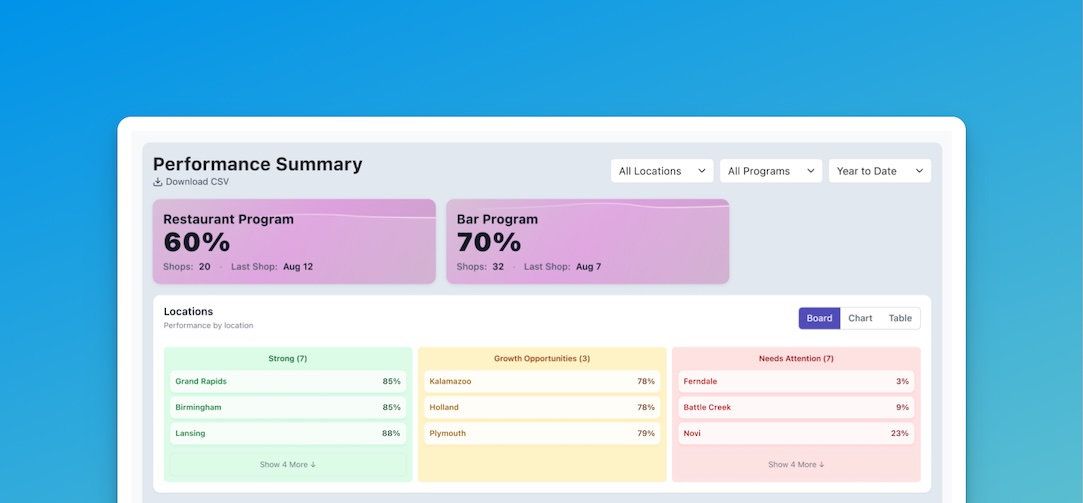
When it comes to the ecommerce customer experience your digital storefront needs to look good to potential patrons. Otherwise you’ll be left with a pretty website and no buyers. And nobody wants that.
In order to optimize your ecommerce customer experience—and your business’s bottom line—you’ll need to follow these industry best practices. They will encourage confidence in your brand a seamless browsing and buying experience and ultimately more customer loyalty. While these best practices are no big secret combining them will turn your operations into a profitable powerhouse.
With that said let’s dive into the world of ecommerce and our best practices for the modern marketplace.
Your Customer and Your Digital Storefront
Ecommerce—more commonly known as online shopping—is as ever-changing as the technology that supports it. And while commerce itself has a number of core values and best practices it takes a bit of translating to put those into practice in the digital world.
By prioritizing the ecommerce customer experience (CX) your business can become a true industry leader. You can outpace your competition and expand your reach to virtually anyone with an internet connection. That’s something a physical storefront just can’t do. If the customers have a positive experience then they’re likely to come back for more—and even send more customers your way unprompted.
So how do you make sure your ecommerce customer experience benefits your business?
#1. Optimize Your Website for Seamless Ecommerce Customer Experience
When you imagine a potential customer wandering into your store the first thing you should be thinking about is “How can I make the best first impression on them?” The same is true for your digital storefront and your ecommerce customer experience. That starts with website optimization.
Although the digital marketplace has changed over the last few decades the philosophies behind optimization remain the same. Nowadays many businesses employ popular ecommerce websites to do the heavy lifting of optimization for them. Sites like Shopify Wix and even Squarespace allow you to easily create your own digital storefront that meets most basic customer expectations. Still it’s important to keep these three things in mind when designing your shopping site.
- Simplified User Journey: The space between finding your site and making a purchase should be as simple and straightforward as possible. Otherwise users will be more likely to abandon their cart before checkout.
- Page Load Speed: You want your website to match the look and feel of your brand—but more importantly it needs to load fast. That means monitoring how much bandwidth is required to pull up your page… and keeping load time under a few seconds.
- Mobile Friendliness: A major development in ecommerce customer experience is the advent of mobile purchasing or “m-commerce”. In fact over 50% of all ecommerce purchases are made on a smartphone. Even more over 80% of shoppers use a mobile phone while inside a physical storefront to look up reviews compare prices or find alternative store locations.
By incorporating these philosophies into your website design your ecommerce customer experience is bound to be better for everyone.
#2. Create a Smooth Checkout Process
Keep the same ideas in mind when designing your checkout process. Make it smooth make it easy and make it accessible to everyone.
Specifically there are a number of ways to streamline this element of the ecommerce customer experience. Offer both frequent flyer and guest checkout options to reduce barriers. Furthermore only collect necessary information from the user. Although a purchase provides an enticing opportunity for data collection too many form fields can deter a conversion. Also when possible provide multiple payment options including popular digital wallets like PayPal. Finally make sure to display consistent and transparent pricing across your entire site to avoid surprise fees or unclear shipping costs.
#3. Personalize Your Ecommerce Customer Experience
Your potential patrons have certain expectations. Namely they anticipate exchanging their personal information for a more tailored shopping experience. Personalization is a powerful and standardized way of boosting business—and if you’re not personalizing you’re missing out.
So how do you personalize your customers’ shopping experience? Simply put you use the data you have. For example leverage purchase history and browsing behavior to automatically recommend products and services that might suit their needs and desires. Similarly you can build and customize marketing emails to include abandoned cart reminders birthday offers and loyalty discounts. Then to put the power in their hands enable customers to create their own accounts with customization options. They can build their own wish lists saved carts and preferences as needed.
In fact all of this is remarkably easy and in reach with the magic of digital automation. That’s why it’s so important to keep personalization in mind for your ecommerce customer experience.
#4. Provide Stellar Customer Support
In order to have a consistent positive and comprehensive ecommerce customer experience you’ll want to address customer support too. In a perfect world no one would ever want—or need—to return their purchase. However it’s a key part of the journey. In fact businesses with solid customer support often win back customers and even build customer loyalty with their programs.
Here are a few important best practices to incorporate into your customer support:
Offer Multichannel Support
Meet your customers where they are. Provide support options via email live chat social media and even self-service FAQs. And don’t forget about phone support. All of these mediums of communication serve different customer scenarios and by accounting for those you’ll promote confidence and convenience.
Ensure Accuracy & Compliance
Maintain accuracy across all your marketing to preemptively prevent customer confusion. Additionally ensure brand compliance across every touchpoint—even over the phone. A consistent appearance further supports trust in your company and promotes a positive ecommerce customer experience.
Prioritize Quick Resolutions
Everything is faster in the digital age—and your customer service issues should be resolved just as fast. Create protocols that streamline the resolution process and address any situation so your customers can find some kind of satisfaction as soon as possible. While this doesn’t mean you should have a no-questions-asked free-return policy on everything preparedness does indeed translate to speed.
#5. Build Trust and Credibility for a Positive Ecommerce Customer Experience
We’ve touched on this best practice before but it warrants its own number on our list. Maintaining your reputation online is a huge business in and of itself. There are plenty of strategies to make your business stand out—and look good doing it.
Firstly incorporate customer reviews and testimonials into your website. This is arguably one of the biggest factors of online credibility—but it can be tricky. Display reviews in a natural accessible place on your site to prove to potential customers that your products are worth the price. However don’t exclusively show positive reviews. Negative and neutral reviews often reinforce buyership when appearing in moderation as this lends credibility to the user’s research. Also never use fake or simulated reviews.
Correspondingly maintain your brand’s reputation by checking other websites particularly social media and review platforms like Yelp and Google Reviews. By responding to comments—positive negative and neutral—and engaging with users online you’ll demonstrate consistency and a philosophy of valuing the customer.
Finally make sure that security features are prominently displayed. Although this might seem pretty basic in the grand scheme of things using simple yet industry-standard security features is a fundamental way to build trust with users. For example provide secure payment gateways or use SSL certificates to validate authenticity. This will bring your potential customers the peace of mind that is essential in the ecommerce customer experience.
#6. Keep Customers Engaged Post-Purchase
With all these best practices in mind it’s critically important that you don’t miss out on follow-up purchases. In other words don’t lose your customers after they “walk away” with a purchase! In fact it’s an essential element of the ecommerce customer experience. Happy customers need to be reminded of the satisfaction they got from your business—so they can come back for more.
Here are three key ways to keep customers engaged after they make a purchase:
- Use email marketing to send follow-up messages deliver order confirmations and provide recommendations. This will help your brand stay top-of-mind and show them more of what you have to offer.
- Encourage customer loyalty through rewards programs and referral incentives. These are little ways you can give back to customers and show your appreciation for their patronage which can pay off bigtime for your business.
- Request feedback on their ecommerce customer experience using custom surveys or review platforms. That way you can leverage one positive customer experience for dozens hundreds or even thousands more.
#7. Evaluate Your Ecommerce Customer Experience Regularly
The last and arguably the most important thing your business can do to elevate your ecommerce customer experience is by evaluating it. Think of a CX evaluation as a mystery shop for your digital storefront. By hiring trained evaluators to examine test and advise you on your platform you can identify issues and pain points before they become major dealbreakers for your customers. Evaluators can also help you find and optimize your competitive advantage building on your strengths and opening up your brand to a wider audience.
Before you borrow your kid cousin to try out your website consider hiring a CX agency like CustomerOptix. It’s easy to get started and costs less than you might expect. Plus you can set up an evaluation program in as little as 10 minutes. Check it out for yourself and get started today.
Optimize Your Ecommerce Customer Experience—And Your Bottom Line
The success of your business hinges on delivering an exceptional ecommerce customer experience. By implementing these seven best practices you can create a seamless and satisfying journey for your customers. Optimize your website create a post-purchase engagement plan and evaluate your operations regularly—all with CX in mind. This not only fosters loyalty and trust but it also positions your brand for long-term growth and profitability.
Ready to take your company to the next level? Start evaluating your platform today and see how even small changes can lead to big rewards for your business.
Subscribe to the Buzz
Receive exclusive insights, tips, and customer experience strategies straight to your inbox.







